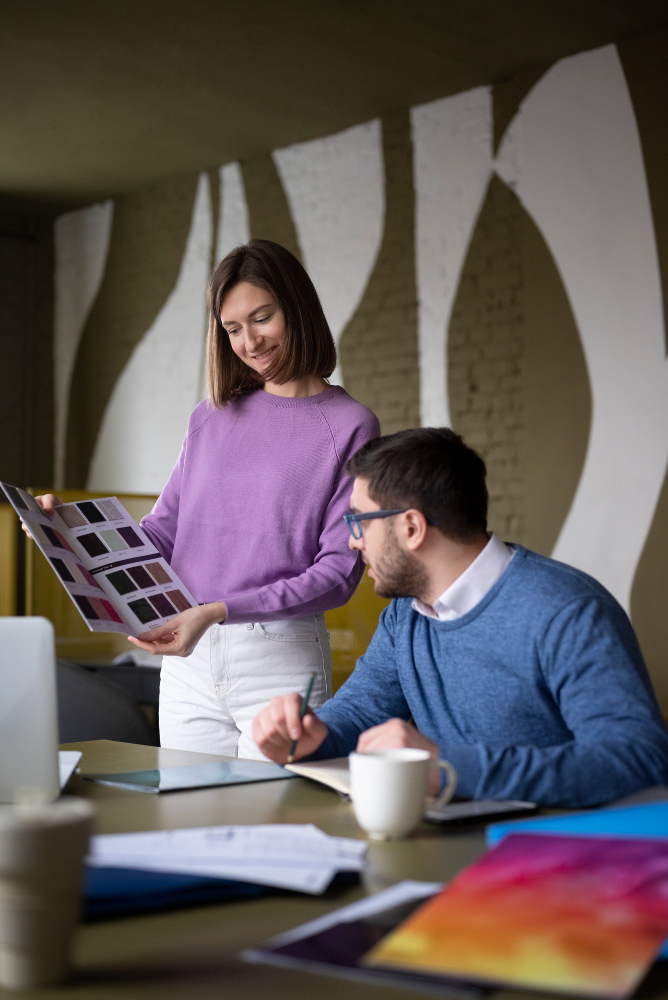Designing the Future: Key Trends in Modern Design Development
- January 24, 2024
- 3 min

In the ever-evolving world of design, the concept of design development stands as a cornerstone. It’s about much more than just aesthetics; it’s about creating functional, sustainable, and impactful spaces that resonate with our evolving societal needs. This process involves a deep understanding of how spaces influence human behavior, community dynamics, and even environmental sustainability. As we stand on the cusp of a new era, it’s crucial to delve into how design development is not just shaping our current spaces but is also paving the way for the future. In this blog post, we’ll explore various facets of design development, uncovering its role in transforming our world.
The Role of Technology in Design Development
The intersection of technology and design development has opened up unprecedented possibilities. Today, designers have access to tools and software that allow for more precise planning, visualization, and implementation of ideas. This fusion is not just about convenience; it’s about precision, efficiency, and the ability to experiment with forms and structures in ways previously unimaginable. From 3D modeling to virtual reality walkthroughs, technology is enabling designers to push boundaries and create spaces that are not only innovative but also more inclusive and user-friendly.
Sustainability: A Core Principle in Design Development
Sustainability is no longer an afterthought in design development; it’s a prerequisite. As we grapple with environmental challenges, the role of design in promoting sustainability has become more significant than ever. This involves using eco-friendly materials, incorporating green spaces, and designing with energy efficiency in mind. Sustainable design is about creating spaces that not only serve our present needs but also ensure the well-being of future generations. It’s a delicate balance between form and functionality, where every element is chosen with the health of our planet in mind.
Human-Centric Design: Fostering Connection and Community
At the heart of design development lies the principle of human-centric design. This approach prioritizes the needs, experiences, and comfort of the people inhabiting these spaces. It’s about creating environments that are not just visually pleasing but also emotionally resonant. This involves understanding the psychology of space, and how design elements like light, color, and texture can influence mood and behavior. Human-centric design seeks to foster a sense of community and connection, making spaces more than just structures but places where people feel welcomed and connected.
Inclusivity and Accessibility in Design Development
Inclusivity and accessibility are becoming increasingly central in design development. This aspect focuses on creating spaces that are accessible to all, regardless of age, ability, or background. It’s about designing with empathy, ensuring that everyone can navigate and enjoy the space without barriers. This means considering factors like wheelchair accessibility, sensory-friendly environments, and intuitive layouts. The inclusive design doesn’t just comply with legal standards; it creates a welcoming atmosphere where diversity is celebrated and everyone feels valued.
The Evolution of Workspace Design
The design of workspaces has undergone a significant transformation, particularly in response to changing work patterns and the rise of remote work. In design development, there’s now a greater emphasis on creating versatile, adaptable spaces that cater to a variety of working styles and needs. This involves designing for collaboration as well as individual focus, integrating technology seamlessly, and providing spaces that promote well-being. Modern workspace design is about creating an environment that fosters productivity, creativity, and, importantly, the mental health of its users.
Integrating Local Culture and Context in Design
Another vital aspect of design development is the integration of local culture and context. This approach ensures that the design resonates with the local community and environment. It involves incorporating local materials, respecting historical context, and reflecting the area’s cultural identity. By doing so, spaces become more than just functional structures; they become a reflection of the community’s heritage and values. This approach not only enhances the aesthetic appeal but also strengthens the bond between the space and its community.
Conclusion
Design development is an intricate and multifaceted process that shapes the very essence of our spaces. It’s about much more than just the physical appearance; it’s about creating environments that are sustainable, inclusive, functional, and emotionally resonant. As we look to the future, the principles of technology integration, sustainability, human-centric design, inclusivity, workspace evolution, and cultural integration will continue to drive innovation in this field. By embracing these principles, we can create spaces that not only meet our current needs but also inspire and uplift future generations. The realm of design development is not just about shaping spaces; it’s about shaping lives and communities, making our world a more livable, inclusive, and inspiring place.
Read More:
Urban Landscape Designs
About Phil Myrick
Phil Myrick is an advisor to planning and development projects around the world and former CEO of Project for Public Spaces. Phil applies research into how people interact with their environments and each other to create vibrant places, destinations, districts, and developments. His strategic advice has helped his clients achieve their goals of attracting people, engaging people in their community, strengthening connections and social fabric, and stimulating economic development. Phil is married with two teenagers and struggles to satisfy his passion for being outdoors or on the water. https://philmyrick.com

